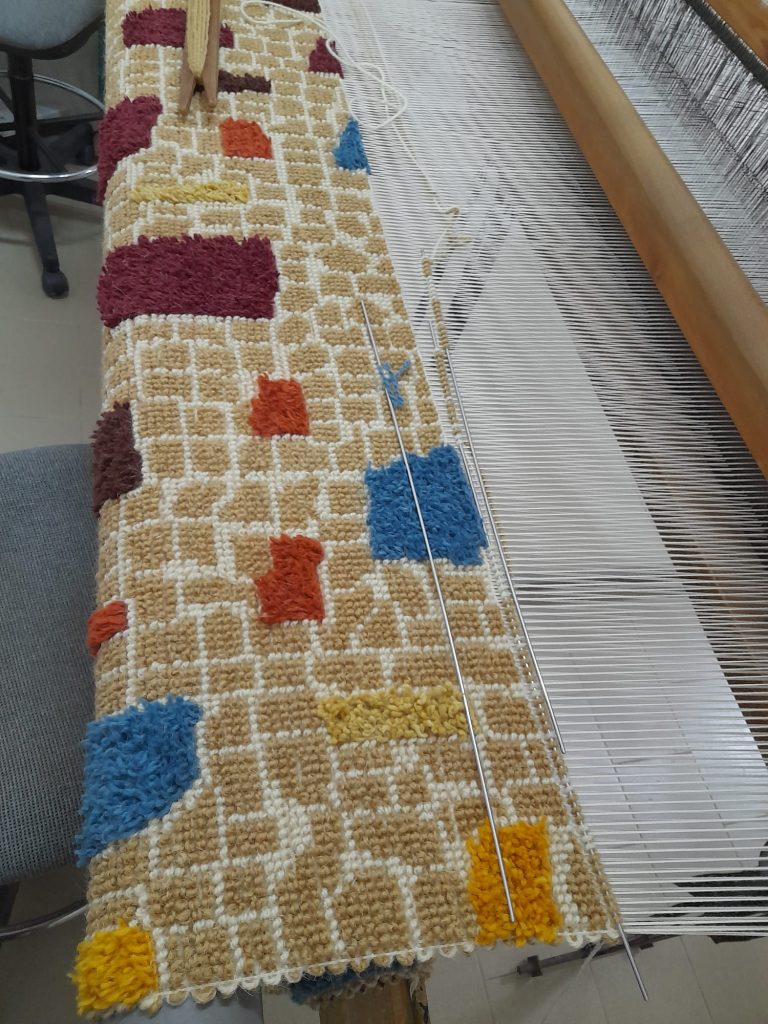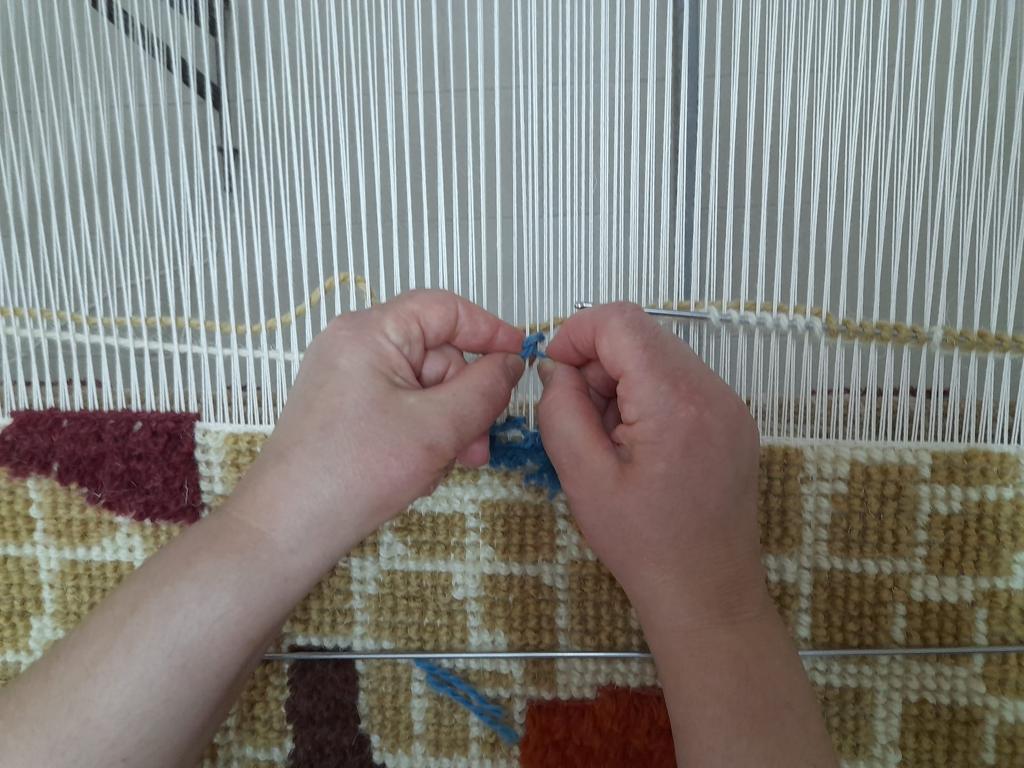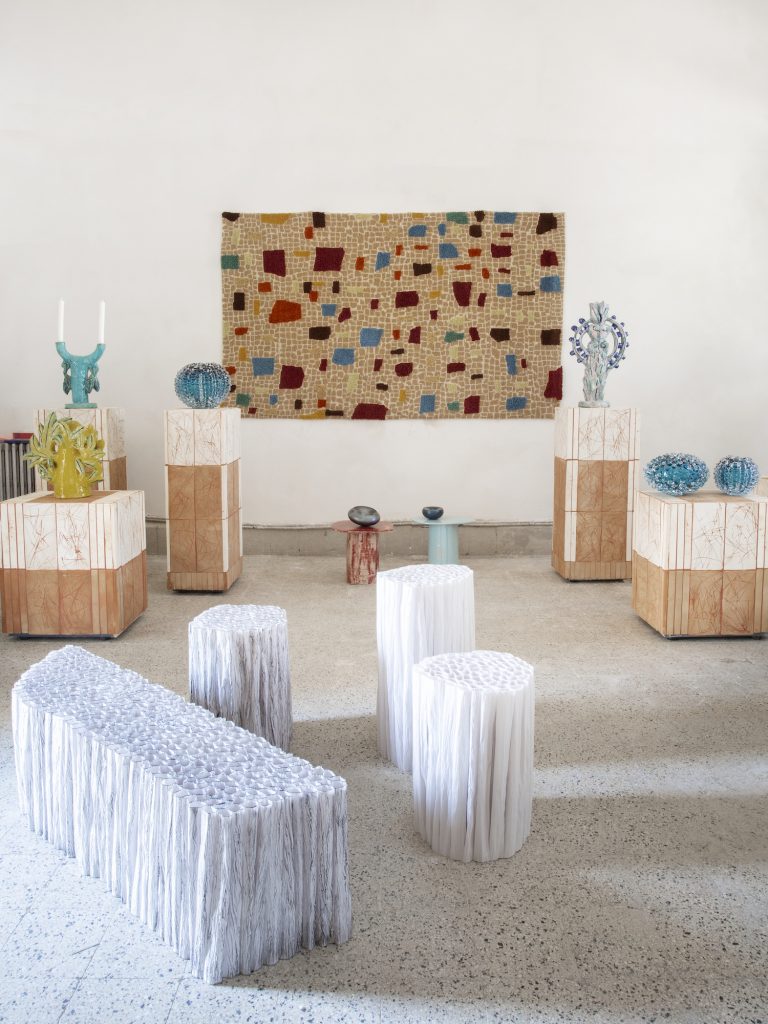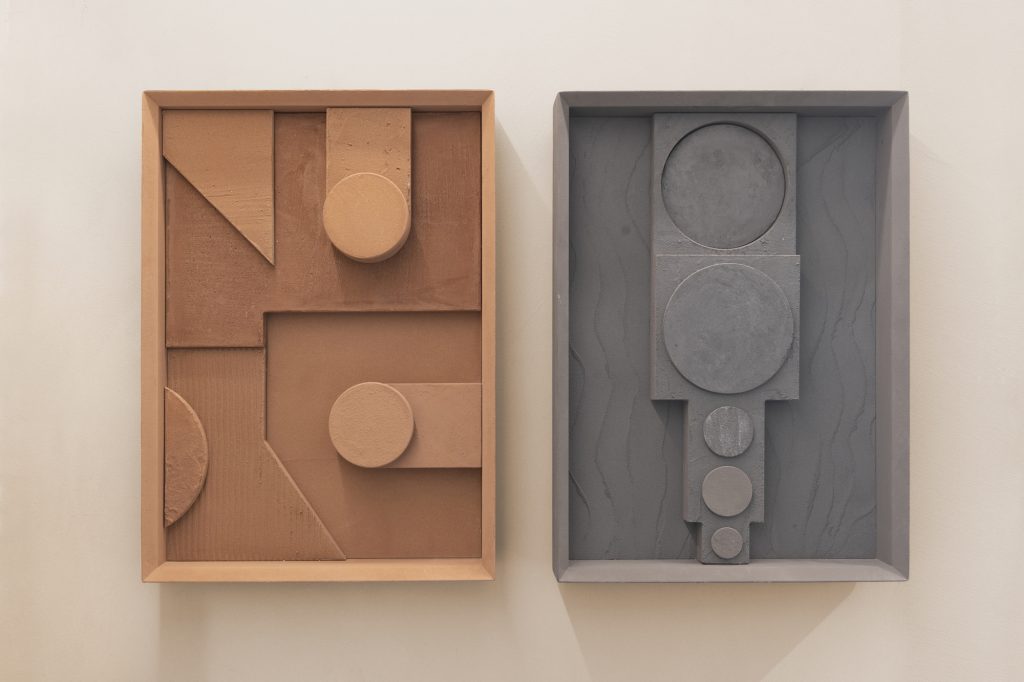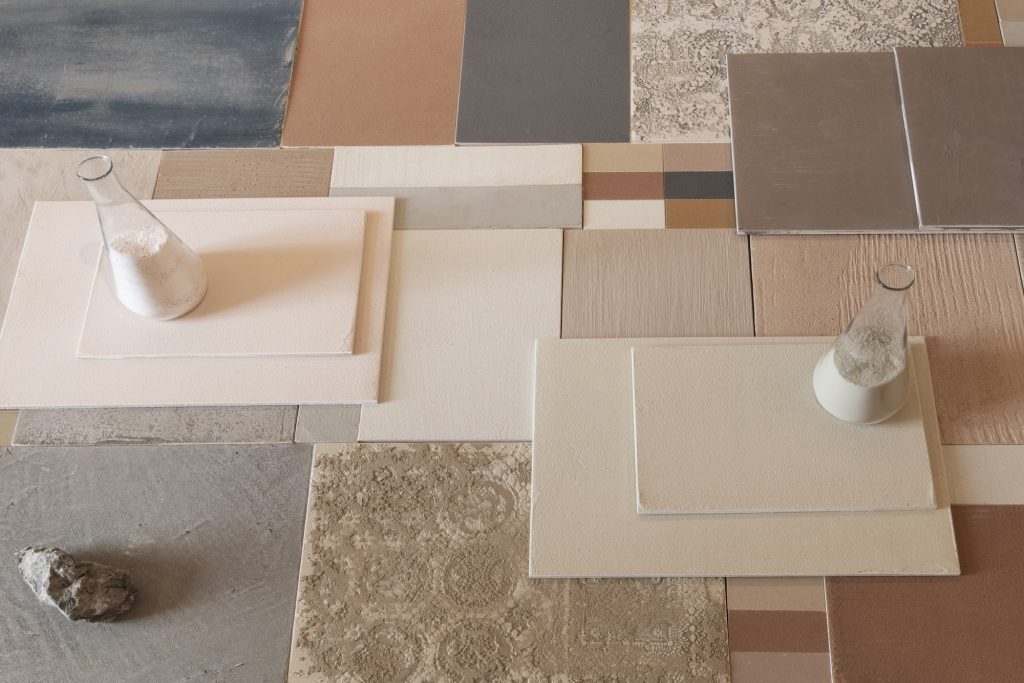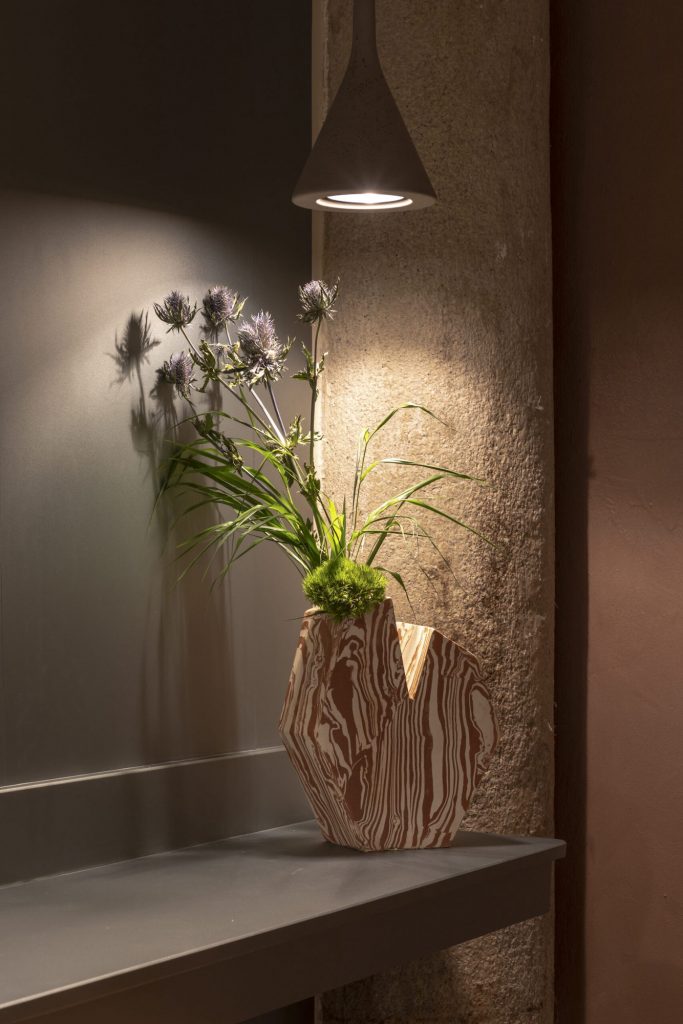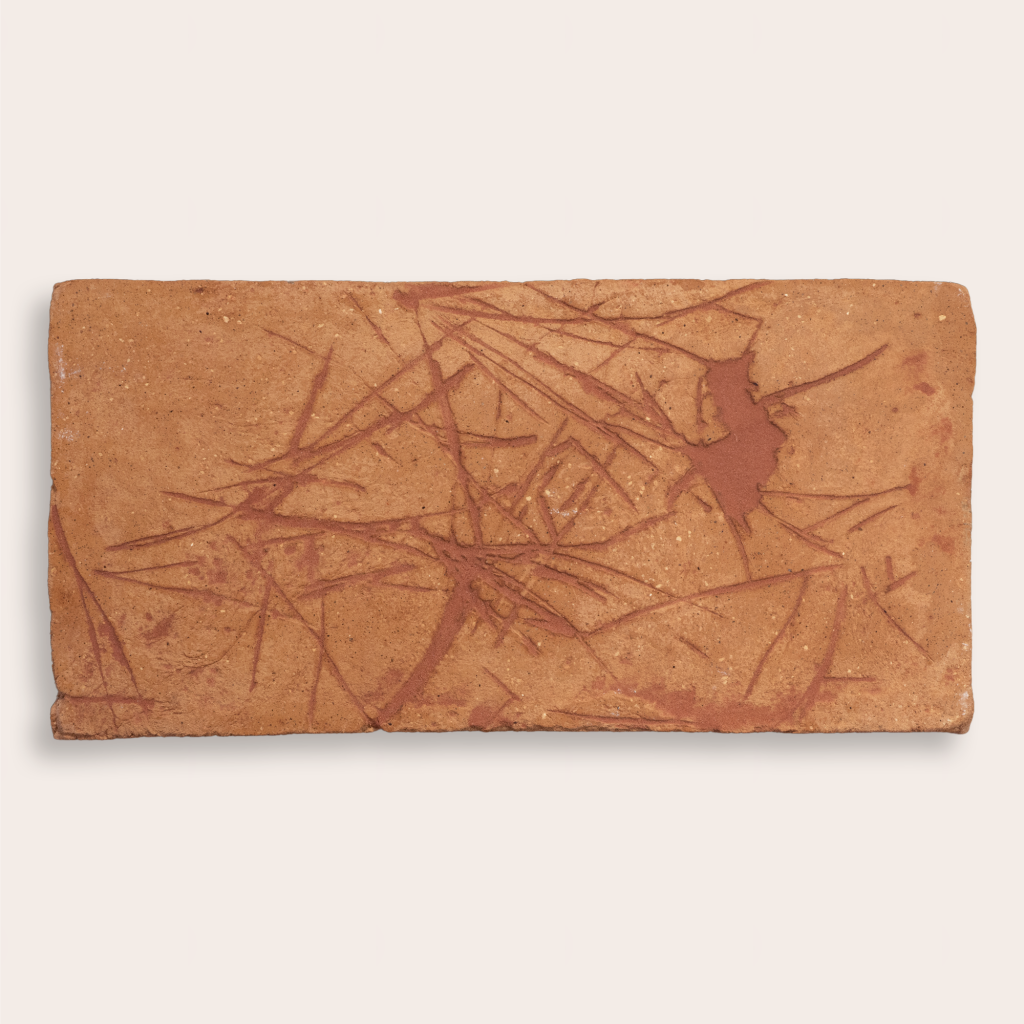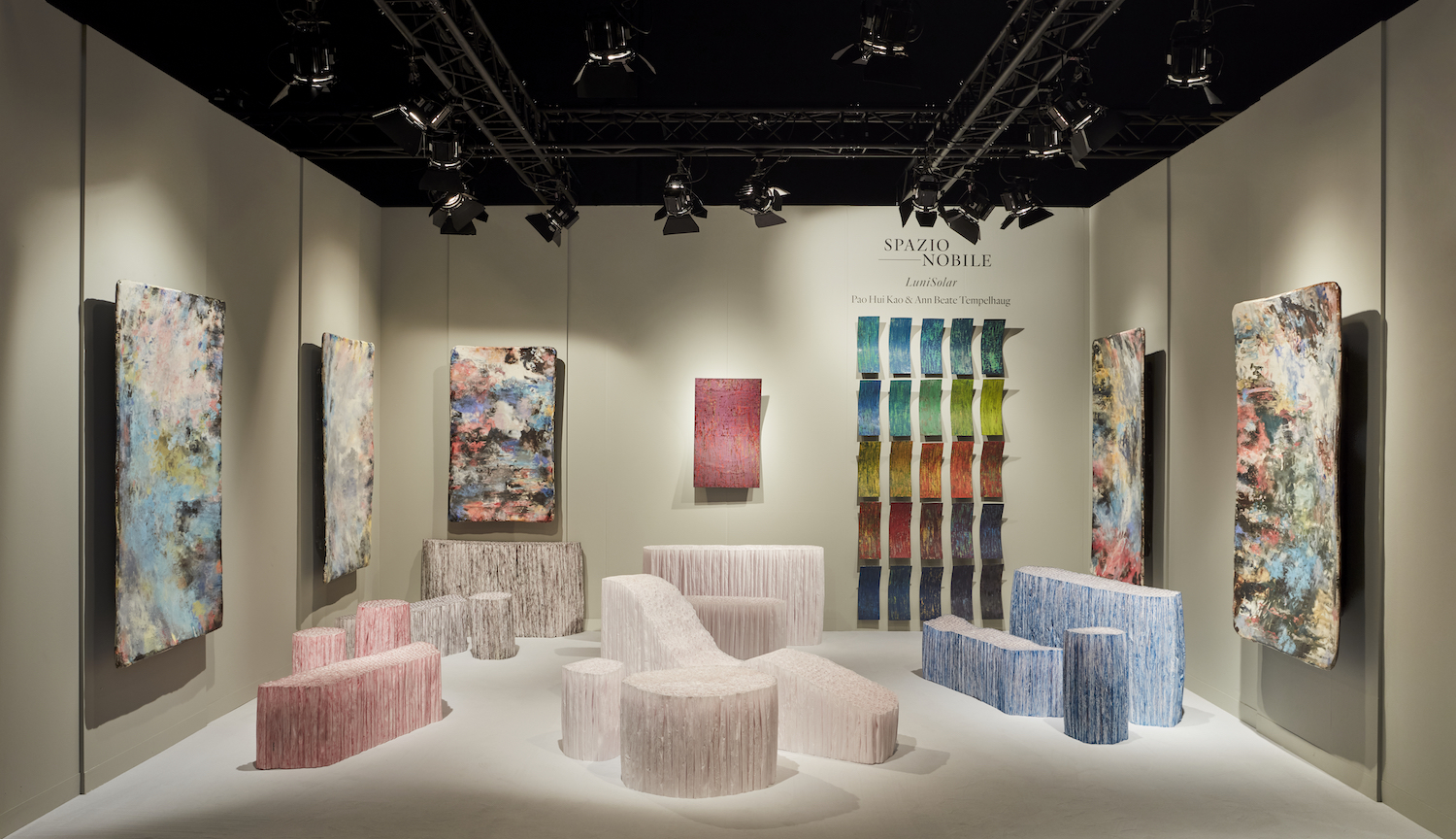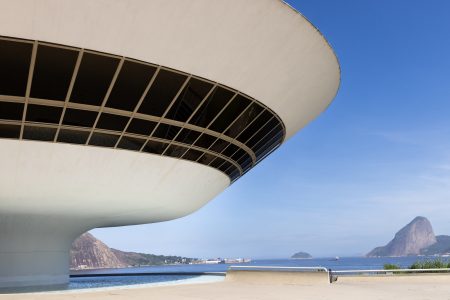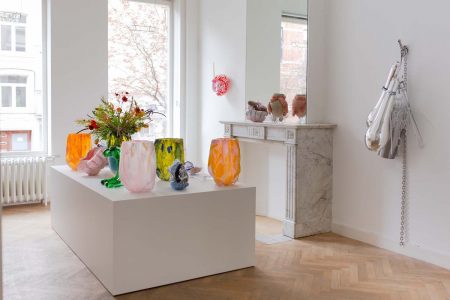Marialaura Irvine: Beautiful Imperfections
The earthy hues of terracotta, the textures of pine needles or ancient mosaic floors are inspirations for Milan-based designer and creative, Marialaura Irvine. She recently presented a new tapestry, Oplontis, with Spazio Nobile Gallery.
“I had to escape to my origins in order to come back to it later in my work,” says Marialaura Irvine about growing up in Naples, Italy. ‘Born on the slopes of Vesuvius’, as her biography states, was certainly a powerful force of history and beauty to contend with, particularly for a young designer discovering her own path and vision. “I felt all of the this history under my feet when I would go to university, the energy and movement of Vesuvius and the earth”. She studied at the Federico II University in Naples with Riccardo Dalisi, one of Italy’s most fascinating and important architects and designers, and whose contribution to the field is still being understood. Dalisi encouraged the students to immerse themselves in nature, to be spontaneous and daring. As part of her thesis project, Dalisi asked her to “make two trees fall in love by generating an architecture”. Irvine united willow and pine, a material that she would go onto use in several projects in the future, but the point was deeper than that – it instilled a sensitivity to beauty and creating an architecture [and design] that “reflected the nature of man and his feelings.”
Irvine, who now lives and works in Milan, brings a sense of experimentation and spontaneity to her work, and which is seen in a new tapestry project titled Oplontis, named after the archaeological site near where the designer was born. Hidden under layers of lava fragments and volcanic ash sat beautifully preserved mosaic patterned floors and walls. Irvine revisits in a contemporary way, the beauty of these ancient pavements of Oplontis, near to Pompeii, in her design for the tapestry; The phases of evolution are like a stratification of pattern, colours, and three-dimensionality. Another concern for Irvine, when thinking about the design for Oplontis, was how to apply the earth in a textile. Handwoven in Sardinia, the rug uses two different weaving techniques: ‘ranos’ and ‘fiocco’, which can be found in the central and eastern areas of Sardinia, and which have never been done together before on the same weaving. “This is a particular type of stitched relief, where the pattern is formed from the countless grains incorporated into the material,” notes Irvine. The rug uses naturally dyed fibres and is a unique piece made in collaboration with Spazio Nobile Gallery. “There is beauty in imperfection,” says Irvine, and “there are lots of imperfections in Oplontis, but this was the idea, to show these imperfections and in doing so, the beauty of the piece.”
This idea of perfect imperfection plays out in her designs for M+, in which the material is in many ways perfect, pressed clay but industrialised, and she gives it a twist towards the imperfect. In the “Quilt” design, a series of ceramic tiles are inspired by patchwork, placed like randomly placed pieces of a puzzle, yet there is always an underlying pattern. “The result is a stoneware mosaic in which the modules can be installed uniformly, for a geometrical effect, or at random, in an uneven layout that recalls antique Venetian Seminato pavings.”
For Irvine, there is something primordial about using earth and applying it in different ways, whether through surfaces, flooring, vases or furniture. In her collaboration as Art Director with Matteo Brioni, the earthy, textured surfaces evoke connections to the hearth, clay, landscapes. With the Fangorosa vases, Irvine applies a marbling of clays to geometric vases named after three Italian volcanoes: Stromboli, Vesuvius and Etna, as well as surface tiles, using terracotta from Lombardy and Umbria, which has been used as a flooring surface for over 4,000 years. In her a new collection for Fangorosa titled, “Futuristic”, pine needles are pressed onto the clay before baking and then burned into the surface, creating a dynamic, abstract dance of lines across the surface, that look primitive and futuristic at the same time, a real crossing of old and new.
Exploring and experimenting with colour is also at the core of her research. Her palette can feel ancient as much as contemporary. Throughout her work there are layers, from the heritage and history of Italy to the connections with the hearth and earth, which are processed and released into new tones, forms, textures and applications.
@studioirvine
